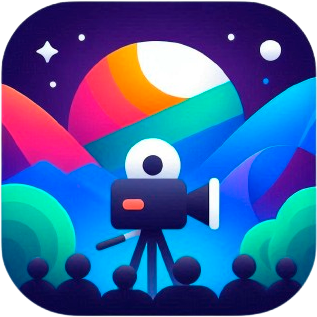Glock is a comprehensive solution consisting of a client library and a server application designed to transmit AV stream from a browser to any output destination using FFmpeg (for example, YouTube via RTMP).
casto.app
| documentation
Note: Glock is currently in active development. Some features may be incomplete or subject to change. Use with caution in production environments.
- Client library (compatible with browsers and Electron)
- Node.js server application deployable with Docker Compose
- Works with FFmpeg and GStreamer (experimental)
- Stream transmission using WebRTC (UDP) for low latency
- Fallback option using WebSocket (TCP) TODO
- Direct transmission of AV stream to any FFmpeg-supported or GStreamer-supported output
- Configurable video encoding parameters TODO
- Automatic buffer size adjustment for optimal performance
The client library is a lightweight JS library written in TypeScript that captures and transmits AV stream from websites or Electron applications.
The server application, written in TypeScript for Node.js, receives the browser stream and uses FFmpeg to encode and output it to the desired destination.
To use the client library in your project, install it via npm:
npm install glockioThen you can import it in your project:
import Client from "glockio";
// Capture AV stream from a video element
const stream = video.captureStream(30);
// Replace with your actual WebSocket server URL and auth key
client = new Client("ws://127.0.0.1:8080", stream, {
debug: false,
authKey: "your-secret-auth-key",
/// ... see other options in the docs
});
// Connect to the server
client.connect().then(() => {
// Start streaming to the destination
client.start({
destinationType: "file",
destination: "video.mp4",
processor: "ffmpeg", // or "gstreamer"
// ... see other options in the docs
});
});To use the server application, clone the repository and run it using Docker Compose:
git clone https://github.com/castoapp/glock.git
cd glock/server
AUTH_KEY=<your-secret-auth-key> docker compose upSee the docs for more detailed documentation.
This project is licensed under the GNU GPLv2 license. See the LICENSE file for details.

